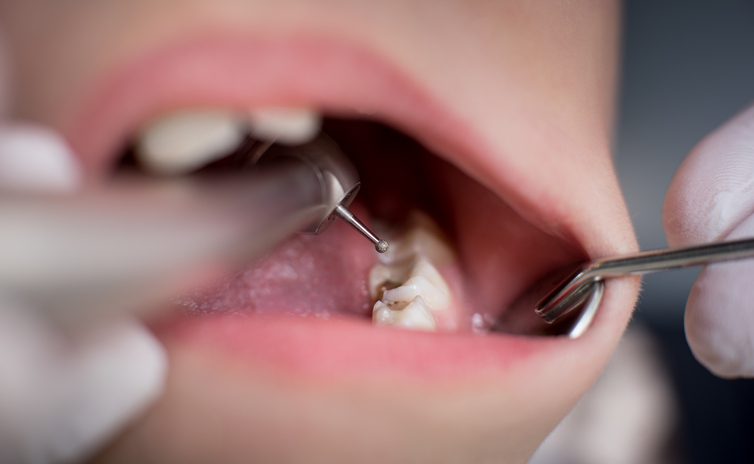What is the Treatment for Tooth Decay : The Ultimate Guide to Reversing Cavities and Restoring Dental Health

The main treatment for tooth decay is fillings, which are used when decay has progressed beyond the earliest stage. Tooth decay is a common dental issue that occurs when plaque builds up on the teeth, leading to the erosion of the tooth enamel.
This can be caused by poor oral hygiene, frequent consumption of sugary snacks, and other factors. If left untreated, tooth decay can cause pain, infection, and even tooth loss. The primary treatment option for tooth decay is dental fillings. This involves removing the decayed part of the tooth and filling it with a suitable material to restore its structure and function.
In cases where the decay has progressed further, root canal therapy or other dental procedures may be necessary. Prevention is key in avoiding tooth decay. Regular brushing with fluoride toothpaste, flossing, and regular dental check-ups can help maintain good oral hygiene and prevent the development of cavities. Additionally, a balanced diet low in sugar and regular use of fluoride treatments can further protect against tooth decay.
Fluoride Treatments
If your cavity just started, a fluoride treatment may help restore your tooth’s enamel and can sometimes reverse a cavity in the very early stages. Dentists commonly treat cavities by filling them. A dentist will remove the decayed tooth tissue and then restore the tooth by filling it with a filling material.
If tooth decay is still in its early stages, before a hole (cavity) forms, the dentist can apply fluoride to reverse the decay. A fluoride treatment can help the enamel to repair itself and potentially reverse the cavity.
In some cases, a fluoride treatment can assist in enamel repair and may have the potential to reverse cavity formation in the early stages. This treatment may be offered to patients during their regular dental check-ups, particularly if there are signs of early tooth decay. It can be applied by your dentist in the form of a gel or varnish to help strengthen and protect the tooth’s enamel.
Fillings
When tooth decay progresses beyond the initial stage, fillings are the main treatment option. Fillings, also known as restorations, help to restore the tooth and prevent further decay. Other treatment options include fluoride treatments, crowns, root canals, and tooth extractions, depending on the severity of the decay.
| Restoration of teeth through fillings or restorations |
| Fillings, also called restorations, are the main treatment option when decay has progressed beyond the earliest stage. They are used to restore the damaged tooth and prevent further decay. |
| Fluoride treatments can help repair the enamel and reverse early tooth decay. This treatment is applied in the form of a gel or varnish at the dentist’s office. |
| If the decay is more severe, a dental filling may be necessary. The dentist will remove the decayed tooth tissue and restore the tooth by filling it with a suitable material. |
| In some cases, a crown may be required to cover and protect a severely decayed tooth. A root canal procedure may also be performed if the decay reaches the tooth’s pulp. |
| If the tooth cannot be saved, a tooth extraction may be necessary. |
| It is important to note that tooth decay cannot heal naturally and professional treatment is required. |
Crowns And Root Canals
Treatment options for tooth decay include:
- Fluoride treatments: If your cavity is in the early stages, a fluoride treatment can help restore the enamel and sometimes reverse the decay.
- Fillings: Dentists commonly treat cavities by removing the decayed tooth tissue and filling the tooth with a filling material.
- Crowns: In cases of extensive decay or damage, a crown may be used to restore the tooth. This involves removing the decayed portion and placing a customized crown over the remaining tooth structure.
- Root canals: For severe decay that has reached the center of the tooth (pulp), root canal therapy may be necessary. The infected pulp is removed, and the root canal system is cleaned and sealed to prevent further infection.
- Tooth extractions: In some cases, a decayed tooth may need to be extracted if it cannot be saved with other treatments.
It’s important to address tooth decay promptly, as untreated decay can lead to pain, infection, and even tooth loss. Regular brushing with a fluoride toothpaste and maintaining good oral hygiene can help prevent tooth decay.
Tooth Extractions
Treatment for Tooth Decay: When tooth decay progresses beyond the earliest stage, fillings are the main treatment option. Fillings, also called restorations, help remove decay and restore the tooth’s structure. Aside from fillings, other treatment options for tooth decay include:
| Tooth Extractions |
|---|
| Removal of severely decayed or damaged teeth may be necessary to prevent further infection or pain. Dentists can perform tooth extractions when other treatment options are not feasible. |
In cases where teeth are extracted, replacement options are available to restore functionality and aesthetics. These options include:
- Partial Dentures: These removable prosthetic devices can replace one or more missing teeth.
- Bridges: A dental bridge consists of one or more artificial teeth that bridge the gap created by missing teeth.
- Implants: Dental implants are artificial tooth roots that are surgically placed in the jawbone to support replacement teeth.
It’s important to consult with a dentist to determine the most suitable treatment option based on individual circumstances and oral health needs.
Nhs Treatment And Costs
| Availability of NHS treatment options |
| Cost considerations for treatment of tooth decay |
When it comes to treating tooth decay, the NHS offers a range of treatment options. One option is dental fillings, also known as restorations. Fillings are typically recommended when decay has progressed beyond the earliest stage. Another option is root canal therapy for more severe cases. Additionally, the NHS may offer fluoride treatments, which can help repair the enamel and reverse early decay.
It’s important to consider the availability of these NHS treatment options. While certain treatments may be readily available, others may have limited availability depending on factors such as location and resource availability. It’s always recommended to consult with your dentist to determine the most appropriate treatment option for your specific case.
In terms of cost, NHS charges for tooth decay treatment are set by the government. The cost can vary depending on the specific treatment required. It’s important to check with your dentist and inquire about the cost of the recommended treatment before proceeding.
Prevention And Maintenance
The treatment for tooth decay depends on the severity of the decay. In the early stages, prevention and maintenance play a crucial role. Regular brushing twice daily is important to remove plaque and prevent the formation of cavities. Using fluoride toothpaste can help strengthen the enamel and minimize the risk of decay. Dentists may also recommend prescribed fluoride treatments to reverse early decay and promote enamel repair. If decay has progressed beyond the earliest stage, fillings are the main treatment option. Dentists remove the decayed tooth tissue and restore it with a filling material. In some cases, more extensive treatment may be necessary, such as crowns, root canals, or tooth extractions. Tooth decay should not be left untreated as it can cause pain, infection, and even tooth loss. Regular dental check-ups and following proper oral hygiene practices are essential for prevention and early detection of decay.

Credit: comeauxdds.com
Frequently Asked Questions For What Is The Treatment For Tooth Decay
What Is The Best Treatment For Tooth Decay?
The best treatment for tooth decay includes fluoride treatments, fillings, crowns, root canals, or tooth extractions. In early stages, fluoride treatments can reverse decay, while fillings are common for cavities. If the decay is advanced, a root canal may be necessary.
In severe cases, tooth extraction may be required. It’s important to seek professional dental care for cavity treatment, as natural healing is unlikely once the damage progresses.
What Will Dentist Do For Tooth Decay?
Treatment for tooth decay includes options such as fluoride treatments, fillings, crowns, root canals, and tooth extractions. If the decay is in its early stages, fluoride treatment can be used to reverse it. For more advanced decay, dentists will remove the decayed tissue and fill the tooth.
If necessary, other treatments like crowns or root canals may be performed. Untreated decay can lead to pain, infection, and tooth loss. It’s important to see a dentist for professional cavity treatment.
Can Tooth Decay Be Treated?
Tooth decay can be treated with various options such as fillings, fluoride treatments, crowns, root canals, and tooth extractions. However, once a cavity has progressed beyond the early stages, it cannot heal naturally and requires professional dental treatment. It is important to see a dentist when experiencing tooth decay symptoms.
Can A Decaying Tooth Recover?
Can a decaying tooth recover? Once tooth decay has progressed beyond the earliest stage, it cannot heal naturally. Professional cavity treatment by a dentist is needed to prevent further damage and relieve pain. Fluoride treatments, fillings, crowns, root canals, and tooth extractions are common treatment options for tooth decay.
Natural home remedies may help prevent tooth decay but cannot fully reverse it.
Conclusion
Tooth decay is a common dental issue that can lead to pain, infection, and even tooth loss if left untreated. Fortunately, there are various treatment options to address this problem. Fluoride treatments can help repair enamel in the early stages of decay.
Fillings are often used to restore teeth once the decay has progressed. In more severe cases, crowns, root canals, or tooth extractions may be necessary. Remember, prevention is key, so make sure to practice good oral hygiene and visit your dentist regularly to maintain a healthy smile.




One Comment